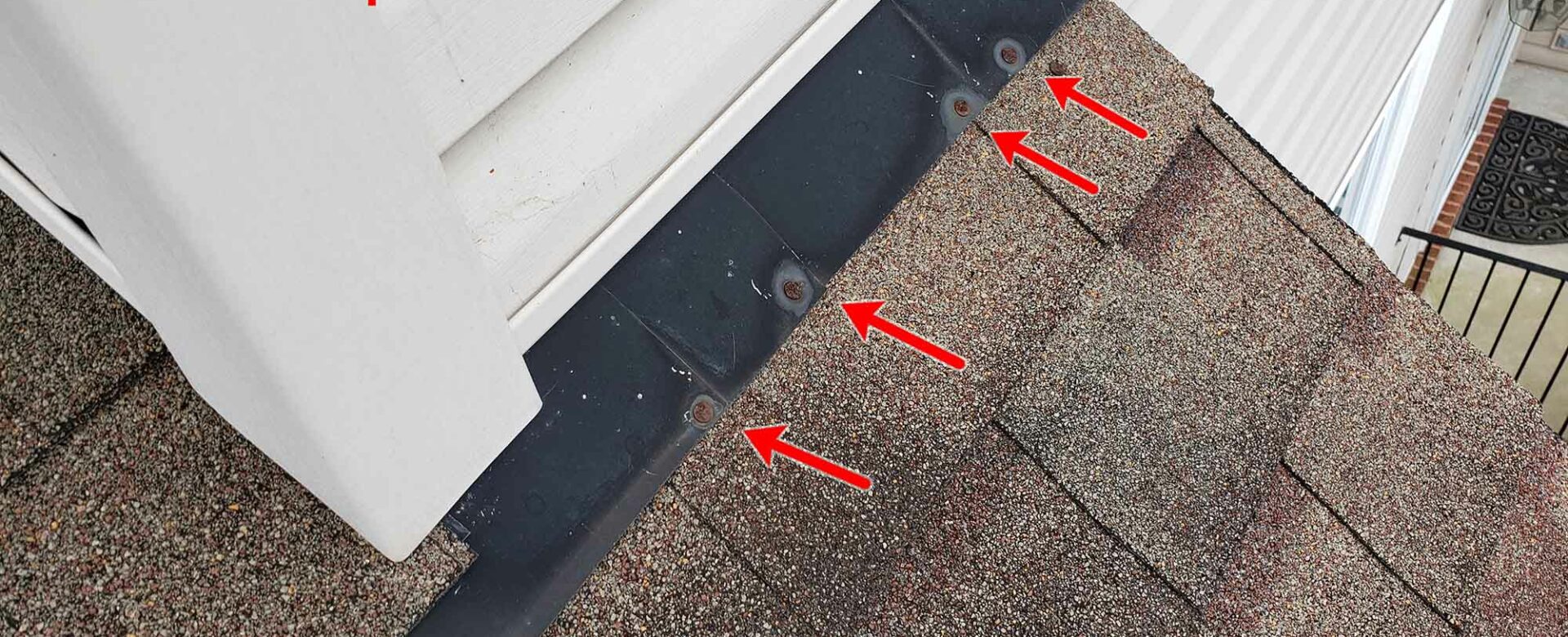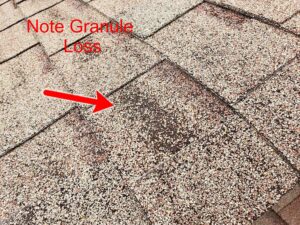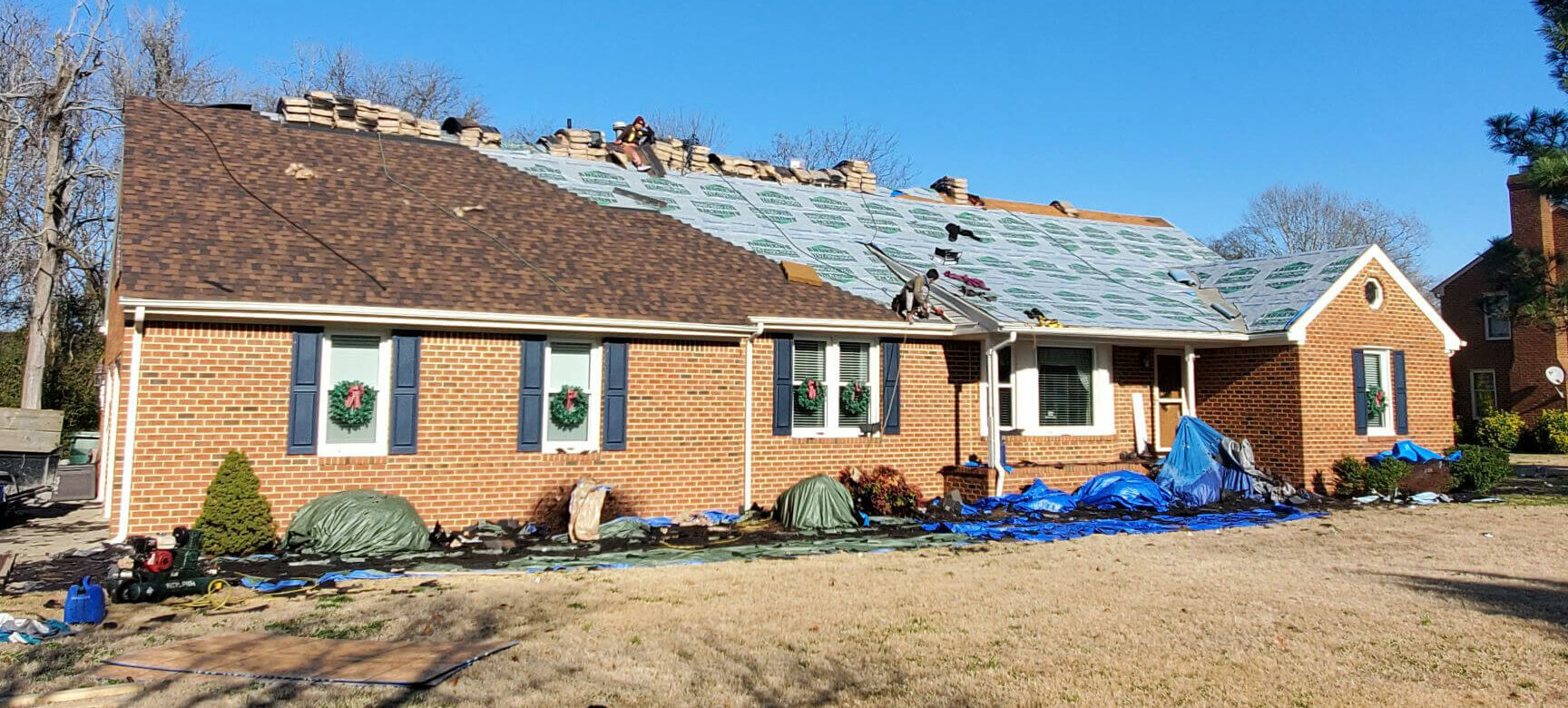The holiday season is synonymous with festive lights and decorations both inside and outside the house. But as beautiful as they are to look at, many of these decorations are placed along rooflines or even on top of roofs – which can become hazardous for both the decorator and the roof itself. Each winter we see preventable roof damage caused by improper decorating methods. But the good news is that with a few helpful tips and smart methods your home can still be the neighborhood holiday showcase without compromising its most important protective system.
Common Types of Holiday Roof Damage
Let’s start with the common problems we see around this time of the year. Many homeowners don’t realize that typical decorating practices can cause long-term damage or reduce the lifespan of materials.
1. Shingle Cracking, Lifting, or Granule Loss
Walking on asphalt shingles, especially in cold weather, can crack them or knock granules loose. This compromises water-shedding ability, which can shorten the lifespan of your roof. Even leaning ladders against gutters or shingles in the wrong way can loosen or misalign them.
2. Damaged Gutters
Homeowners often use gutters as anchor points for lights or heavy décor. Excess weight or pressure can bend, crack, or pull gutters away from the fascia, leading to drainage issues and potential water damage later.
3. Punctures From Nails, Screws, or Staples
This is one of the biggest culprits. People will often nail or staple decorations into shingles or the roof deck, but any penetration creates a pathway for water intrusion. Even small holes can lead to leaks and hidden moisture damage over time.
4. Roof Surface Damage from Heavy Decorations
Placing inflatable decorations, wooden cutouts, or other hefty items directly on the roof can dent metal panels, crack shingles, and create unsafe pressure points. They can also become dangerous flying debris if bad weather crops up.
5. Vent and Flashing Issues
Decorations tied around plumbing boots, chimneys, skylights, or other roof penetrations can damage flashing or loosen seals—two of the most common sources of leaks.
Tips for Decorating Your Roofline Safely
You can still create a festive, illuminated roofline without compromising your roof’s health. Here’s how:
Use Clip-On Light Hangers—Never Nails or Staples
Outdoor light clips are designed to attach to gutters or the drip edge without penetrating the roofing material. They’re inexpensive, widely available, and protect your shingles from unnecessary holes.
Choose Lightweight Decorations for the Roofline
If you want a dramatic display, focus on the eaves and gutters—not the roof surface. Hanging icicle lights, ridge-line lights (installed with non-invasive clips), or gable-mounted décor is safer than rooftop installations.
Avoid Walking on the Roof Whenever Possible
Cold shingles are brittle, and metal roofs can be extremely slippery. Use a ladder stabilizer attachment so your ladder rests on the side of the house rather than the gutters or shingles.
Keep Decorations Away from Roof Penetrations
Attaching your lights or decorations directly to chimneys or vents may seem like a secure option, but they can pull on flashing or disturb sealants especially when severe weather or strong winds blow through. Leave a clear perimeter around all roof penetrations to avoid damage and eventual leaks.
Avoid Roof-Top Inflatables or Heavy Décor
Inflatables may look lightweight, but they need tie-down points—and those tie-downs will typically necessitate some type of penetration and damage to the roof surface. They also can catch the wind, increasing the risk of tearing shingles or ripping gutters loose. Keep inflatables on the lawn where they’re safest.
Use UL-Listed or LED Lights
Older incandescent lights generate far more heat and may overload circuits or melt nearby materials. LED lights stay cool to the touch, use less power, and reduce the chance of electrical issues. Always look for UL-listed lights and extension cords, which means they’ve been tested for safety and meet national electrical standards. This goes for any electrical/light up decoration – not just string or icicle lights.
Check the Weather Before Decorating
While we don’t get many bitter cold days in Hampton Roads, they can happen. Decorating in freezing temperatures increases the chance of shingle cracking. Whenever possible, put up decorations on one of our typical mild, dry days.
Additional Safety Tips for Around the House
Beyond just your roof there are some things you should consider for the overall safety of your home and the people inside it!
- Use the right ladder height so you’re not leaning heavily on gutters or climbing onto the roof unnecessarily.
- Never overload electrical cords or outlets. Overheated wires can damage siding, gutters, or roofing materials.
- Secure all extension cords so they don’t lift shingles, block water flow, cause tripping or become tangled in nearby objects.
- Inspect your roof afterward. Once decorations come down, check for loose shingles, sagging gutters, or debris. Winter storms will take advantage of any weak spots, so be proactive in your home’s defense.
When to Call a Roofing Professional
If you notice lifted shingles, bent gutters, or signs of a leak after removing holiday decorations, it’s wise to schedule an inspection before the serious winter weather sets in. Early repair is far cheaper and safer than dealing with water damage or roof replacement.
Decorating for the holidays should be a fun, joyful time. Keep it that way with these smart tips that will help keep your home festive and protected all season long. If you have concerns about your roof’s condition or need help addressing winter-related damage, Andrews Roofing is here to help – contact us today!







